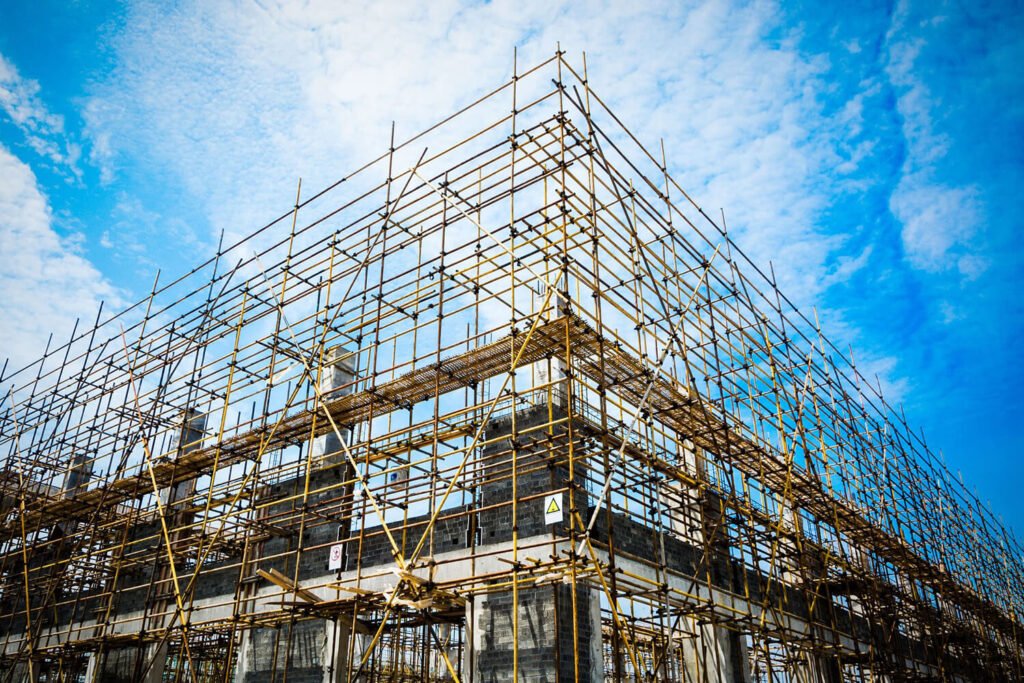Top-Notch Scaffolding Near Me: Expert Solutions for Every Job
Top-Notch Scaffolding Near Me: Expert Solutions for Every Job
Blog Article
Exploring the Numerous Sorts Of Scaffolding Used in Building Tasks
The building sector relies heavily on numerous types of scaffolding to satisfy specific task demands, each offering distinctive advantages and applications. Traditional structure scaffolding offers a tough foundation for basic tasks, while suspended scaffolding is important for job on high-rise structures.

Typical Structure Scaffolding
Conventional structure scaffolding is among one of the most commonly used techniques in the building market as a result of its effectiveness and convenience. This system contains upright and straight frames that are set up to develop a steady platform for employees and products. The major parts consist of vertical messages, horizontal ledgers, and diagonal dental braces, which together provide a solid framework that can support substantial loads.
One of the key benefits of traditional framework scaffolding is its flexibility to various building jobs, varying from domestic buildings to big commercial frameworks. The modular design enables easy assembly and disassembly, making it reliable for both short-term and long-lasting projects. Furthermore, the system can be customized in elevation and size, fitting different building layouts and site conditions.
Security is extremely important in scaffolding applications, and typical frame systems are geared up with guardrails and toe boards to avoid falls and guarantee employee defense. Routine assessments and adherence to safety and security regulations are important in keeping the stability of the scaffold (Scaffolding). Overall, conventional framework scaffolding stays a basic selection in the building sector, giving a dependable platform for labor and improving general job effectiveness

Suspended Scaffolding
Put on hold scaffolding uses a distinct service for construction tasks that require accessibility to raised surface areas, especially in scenarios where traditional framework scaffolding may be unwise. This kind of scaffolding is typically put on hold from the roof or top degrees of a framework, utilizing a system of platforms, ropes, and sheaves to produce a working room that can be changed to different heights.
Among the main advantages of put on hold scaffolding is its versatility. It can be quickly rearranged or reduced to suit changes in construction requirements, making it ideal for jobs such as window installation, frontage work, and upkeep on skyscraper buildings. Additionally, the marginal footprint of put on hold scaffolding permits far better use ground area in city environments, where area is usually minimal.
Safety is a critical factor to consider in the usage of put on hold scaffolding. Overall, suspended scaffolding gives a efficient and effective solution for accessing hard-to-reach areas in different building scenarios, boosting both efficiency and safety on site.
System Scaffolding
System scaffolding, usually considered a contemporary solution in the scaffolding sector, contains pre-engineered components that can be swiftly assembled and adapted for different building jobs. redirected here Scaffolding. This go to these guys sort of scaffolding is characterized by its modular style, which allows for adaptability and performance on work sites, accommodating various heights and structural needs
Commonly made from high-strength steel or aluminum, system scaffolding uses enhanced resilience and security. The elements consist of upright posts, straight ledgers, and angled dental braces, which interconnect firmly, guaranteeing a durable framework. The style often includes standardized installations, streamlining setting up and disassembly processes, consequently minimizing labor time and prices.

Rolling Scaffolding
Rolling scaffolding is a versatile alternative to traditional fixed scaffolding, developed for flexibility and convenience of usage on building websites. This type of scaffolding consists of a system supported by frameworks with wheels, enabling workers to conveniently relocate it as needed. The flexibility attribute dramatically boosts efficiency, as it reduces downtime linked with assembling and dismantling repaired scaffolding.
Commonly created from light-weight products such as aluminum or steel, rolling scaffolding uses a sturdy yet portable remedy for tasks calling for frequent repositioning - Scaffolding. click to read more It is specifically advantageous in jobs such as painting, drywall installation, and electric work, where accessibility to various elevations and locations is essential
Safety and security is extremely important in rolling scaffolding style, with attributes such as locking wheels to avoid unplanned motion when being used, and guardrails to safeguard employees from drops. Additionally, lots of models are adjustable in elevation, fitting different job demands.
Cantilever Scaffolding

The style of cantilever scaffolding commonly includes making use of braces or arms anchored to a building or structure, making it possible for the system to prolong exterior securely. Safety and security is critical; thus, these scaffolds need to be engineered to hold up against different lots and ecological problems. Normal assessment and maintenance are necessary to ensure architectural integrity and worker safety.
Cantilever scaffolding is favored for its adaptability and effective use room, making it a prominent selection in city environments where area restrictions prevail. It promotes simpler accessibility to high elevations, eventually adding to the general efficiency of building jobs. As with all scaffolding types, correct training and adherence to safety standards are essential for employees utilizing cantilever scaffolding.
Conclusion
Traditional framework scaffolding provides stability, while suspended scaffolding provides adaptability for raised jobs. System scaffolding facilitates quick setting up, and rolling scaffolding enhances flexibility for varying job atmospheres.
Traditional framework scaffolding offers a strong foundation for general jobs, while put on hold scaffolding is essential for job on skyscraper frameworks.Moving scaffolding is a versatile alternative to traditional set scaffolding, created for wheelchair and simplicity of use on construction websites. As with all scaffolding kinds, appropriate training and adherence to safety standards are critical for employees utilizing cantilever scaffolding.
Traditional structure scaffolding supplies stability, while put on hold scaffolding uses adaptability for elevated jobs. System scaffolding assists in quick assembly, and rolling scaffolding enhances flexibility for differing work settings.
Report this page